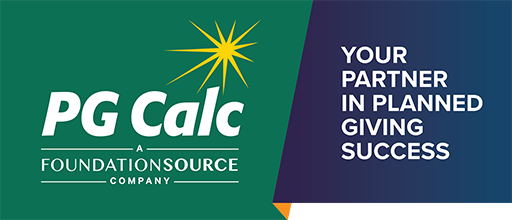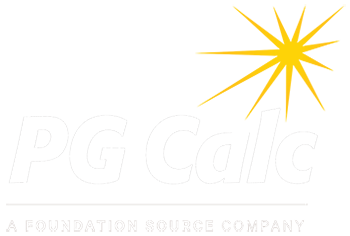The One Big Beautiful Bill Act (OBBBA) reshapes many aspects of tax planning. How these changes will affect donor behavior remains to be seen. For fundraisers, understanding the key changes – when they start, when they end, and how they’ll affect your donors – is critical to informing fundraising strategies and messages.
Most of the provisions of the OBBBA with significant potential impact on charitable giving take effect beginning in 2026 and, importantly, many of the charitable provisions are permanent and do not sunset. These changes provide a new, but complex, basis for charitable gift planning.
Here is a breakdown of several key provisions and their potential implications for donors.
Key Changes and Timelines
The OBBBA introduces a mix of new incentives for small donors and new limitations for high-capacity donors. While the overall impact on charitable giving will become apparent only in time, a segmented fundraising approach will help capture the new opportunities and mitigate the new challenges.
| Provision | Effective Year and Duration | Donor Impact & Behavior |
| Universal Charitable Deduction for Non-Itemizers | 2026 Permanent | Encourage first-time or smaller gifts: Non-itemizers can deduct up to $1,000 Single / $2,000 Joint in charitable contributions. This will appeal to the ~90% of taxpayers who take the standard deduction. |
| State and Local Tax (SALT) Deduction | 2025 (immediate) Expires after 2029 | Increased number of donors may itemize: The previous $10,000 limit on SALT deductions is increased to $40,000 for those with MAGI up to $250,000 Single / $500,000 Joint. But the increased deduction is phased out for those with higher incomes. |
| 0.5% AGI Floor on Itemized Deductions | 2026 Permanent | Disincentive for itemizers: Donors must exceed 0.5% of “Contribution Base” (AGI for most taxpayers) in contributions before any amount is deductible. Could lead donors to adopt “bunching” strategies (giving a larger amount in one year to clear the floor). |
| 35% Deduction Cap for Top-Bracket Donors | 2026 Permanent | Disincentive for top-bracket taxpayers: The value of the charitable deduction for taxpayers in the 37% bracket is capped at 35%. This creates an incentive to accelerate giving in late 2025 to lock in the higher 37% benefit before the cap takes effect. |
| 1% Floor on Corporate Deductions | 2026 Permanent | Disincentive for small/mid-sized businesses: Corporations must exceed 1% of taxable income in contributions to claim a deduction. May lead to fewer small corporate gifts but potentially larger, less frequent gifts from major corporate donors. |
| Scholarship Granting Organization (SGO) Tax Credit | Begins 2027 Permanent | New incentive: Provides a non-refundable tax credit (up to $1,700) for cash donations to a specific group of qualifying SGOs. This new tax incentive could create competition for general charitable dollars. |
How the Changes Could Affect Donor Behavior
- Grassroots and mid-level donors have a clear, new incentive (Starting 2026):
The Universal Charitable Deduction is a significant win for broadening the donor base. The roughly 90% of Americans who take the standard deduction will be able to deduct contributions up to $1,000, or $2,000 for joint filers, which will reduce taxable income. This is a powerful, clear, and easy-to-understand tax benefit that was previously unavailable.
- Major donors are encouraged to act by the end of 2025:
The reduction of the tax benefit for top-bracket donors (from 37¢ to 35¢ per dollar) and the new 0.5% AGI floor for itemizers may prompt strategic giving. Affluent donors should be encouraged to “front-load” major gifts into 2025 to maximize the deduction value before the new caps and floors are in place for the 2026 tax year. This may include large gifts of appreciated assets or contributions to Donor Advised Funds (DAFs) in 2025. Beginning in 2026, high income donors may adopt “gift bunching” strategies to concentrate several years’ worth of giving into a single year to clear the 0.5% AGI floor and maximize deductions.
- Corporate giving will become more selective (Starting 2026):
The new 1% of taxable income floor for corporate deductions means smaller, less structured corporate giving programs may vanish, as a small gift won’t be tax deductible. Fundraising from corporations should focus on securing larger, more strategic multi-year partnerships with companies whose giving is likely to exceed the 1% threshold.
- A new competitor for charitable dollars (Starting 2027):
The new SGO tax credit is a powerful tax incentive that may divert some giving toward educational organizations that meet the qualifying criteria. Non-SGO nonprofits should prepare to emphasize the unique, critical, and non-substitutable nature of their mission to compete with this dollar-for-dollar tax incentive.
Fundraising Talking Points to Encourage Giving
While it is essential to educate donors about the tax environment, remember that tax incentives are rarely the primary reason for giving. They simply influence the size, timing, and method of a gift. To navigate these changes, we suggest a two-pronged strategy: lead with impact and mission, while equipping donors with the knowledge to maximize their generosity.
For Non-itemizers (Starting 2026)
- The Lead: “Your gift now has a double impact. It changes lives and directly lowers your taxes, even if you take the standard deduction!”
- Key Message: “For the first time in years, the federal tax code offers an above-the-line deduction for your cash gifts up to $1,000 (or $2,000 for couples). This means your support for our mission also reduces your taxable income, regardless of other deductions. It’s a clear, new way to partner with us.”
For High Income Itemizers (Focus on 2025)
- The Lead (Urgency for 2025): “The window is closing to lock in the highest possible tax benefit for your major gift. Let’s make your 2025 gift count even more.”
- Key Message: “As you plan your year-end giving, please note that the top deduction value will be reduced starting in 2026. By making your significant gift of cash or appreciated stock before January 1, 2026, you lock in the current 37% deduction rate. This is an exceptional opportunity to maximize the power of your philanthropy.”
- Post-2025 Strategy: Introduce and encourage a “bunching” strategy for your major donors. “By consolidating several years of giving into one large gift this year, you can easily clear the new 0.5% AGI threshold, maximize your current-year tax deduction, and provide us with transformative funding to sustain our work for years to come.”
Talking to Corporate Partners (Starting 2026)
- The Lead: “Let’s move past small transactions to a significant, strategic partnership that delivers both maximum impact and tax efficiency.”
- Key Message: “The new 1% floor for corporate charitable deductions is a signal to move to more meaningful philanthropy. Instead of smaller, annual contributions, let’s explore a multi-year, seven-figure partnership that firmly exceeds the new tax threshold. This long-term commitment will not only provide us with critical stability but also give your business a significant tax benefit.”
Final Word: Lead with Mission
Although the tax landscape is changing, the highest priority still is demonstrating your mission’s profound impact and sharing compelling stories. The new tax law has opened doors for all donor segments and provides opportunities to lead donors to their next gift using the tax aspects as a tool to enhance, not replace, the power of your compelling cause.

